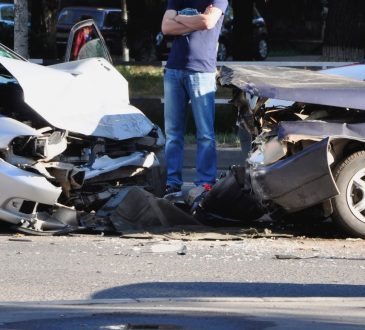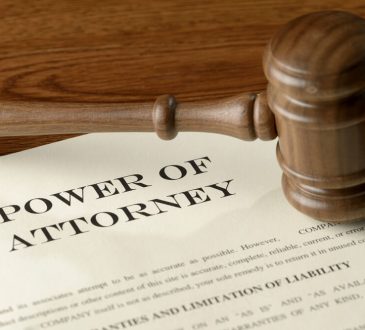
A dog bite is painful in the moment and complicated afterward. Medical bills stack up, stories differ, and Nevada’s rules aren’t as simple as people expect. Paradise, an unincorporated community in Clark County, follows Nevada law and local ordinances that together determine who’s responsible and what compensation is available. This guide breaks down how liability works in Paradise dog bite cases, how to document injuries, who may share fault, the deadlines to watch, and the types of damages victims can recover. It’s written to be clear and practical, so readers can move from confusion to a plan.
How Nevada’s one-bite rule influences owner responsibility
Nevada doesn’t have a statewide strict-liability dog-bite statute. Instead, liability often turns on negligence and knowledge, what’s commonly labeled a “one-bite rule.” In simple terms, an owner is more likely to be liable if they knew (or should have known) the dog had dangerous tendencies and failed to act reasonably to prevent harm.
What counts as knowledge? Prior bites or snaps, lunging, a history of aggression with delivery workers, or documented complaints to Animal Control can all put an owner on notice. If the dog previously bit someone, that prior incident is powerful evidence. But there’s more to it than just past bites:
- Leash and containment violations: Paradise and the rest of Clark County require dogs to be leashed in public and properly confined at home. Breaking these rules can support negligence per se, liability based on violating a safety law intended to protect the public.
- Dangerous/vicious classifications: Under NRS 202.500, a dog can be designated “dangerous” or “vicious” based on behavior. Owners of such dogs have heightened duties. Ignoring those duties (for example, failing to muzzle a dog classified as dangerous) can strongly support liability.
- Foreseeability: Even without a prior bite, facts like repeated escape incidents, warnings from neighbors, or aggressive body language combined with owner inaction can show the risk was foreseeable.
Comparative negligence applies in Nevada (NRS 41.141). If a victim provoked the dog, trespassed, or ignored posted warnings, a jury can assign them a percentage of fault, reducing their recovery proportionally. As long as the victim’s share of fault is not more than 50%, they can still recover.
A quick myth-buster: “One bite free” isn’t the law. Owners can be liable even for a first bite if they were careless, say, letting a large dog roam off-leash near a playground. Conversely, if a dog was securely contained and someone ignored clear warnings and reached over a fence, the analysis is different. The facts matter.
Paradise Dog Bites Accidents often turn on small details: did the gate latch fail regularly, were there prior complaints, what do the Animal Control records say? If available, those agency pages sometimes include a “View Details” link for incident summaries, which can be invaluable when building a case.
Gathering medical documentation and photographic evidence of injuries
Strong evidence is the backbone of a successful claim. Right after a bite, medical care comes first: documentation should follow closely.
Essential medical records:
- Emergency department/urgent care notes describing the mechanism of injury, wound depth, and initial treatment
- Tetanus and rabies exposure assessments (and vaccines, if given)
- Imaging (if there’s suspected tendon or nerve damage)
- Plastic surgery and wound-care notes for lacerations and scarring
- Physical therapy or occupational therapy records if mobility is affected
- Mental health records for anxiety, nightmares, or PTSD, especially common in children after severe bites
Photographic proof should start early and continue over time. Capture:
- The scene: the yard, gate, broken leash, or open door: any “Beware of Dog” signs: blood on clothing
- The dog (only if it’s safe), a quick shot can help Animal Control match reports
- The wounds: day-of close-ups with a ruler or common object (a coin) for scale
- Healing progression: new photos every few days or after each dressing change: later, take scar photos under good light and from multiple angles
Other helpful evidence:
- Witness names, phone numbers, and short written statements while memories are fresh
- Animal Control report number and officer name
- Prior complaint numbers about the same dog or address
- Any available surveillance or doorbell camera footage from nearby homes or businesses
- The owner’s insurance information (homeowner’s, renter’s, or landlord policy)
Practical tips that make a difference:
- Keep a pain and recovery journal: note sleep disruptions, work days missed, and activities you can’t do.
- Save receipts for bandages, prescriptions, mileage to appointments, and childcare, small costs add up.
- Don’t clean up or repair the scene (like fixing a broken latch) until it’s photographed. If the property owner rushes to fix it, time-stamped photos taken earlier are gold.
If an insurer or adjuster asks for a recorded statement, it’s wise to wait. Provide the basics (contact info, date, time), but detailed statements are best made after speaking with counsel, because offhand comments can be misconstrued. If you’re browsing county records online, look for incident pages that allow you to “View Details” for earlier complaints: that history can strongly support negligence.
Determining fault when multiple parties share animal control duties
In Paradise, responsibility for a dog doesn’t always rest with a single person. Liability can extend to anyone who owned, kept, or controlled the animal at the time of the incident, depending on the facts.
Common multi-party scenarios:
- Roommates and family households: If several adults share feeding, walking, and yard access, more than one may be considered a keeper.
- Dog walkers, sitters, and groomers: A professional handling the dog who ignores clear safety steps (like using a secure leash or muzzle for a known biter) may bear fault.
- Landlords and property managers: Generally, Nevada doesn’t hold landlords liable just because a tenant’s dog bites someone. But if a landlord knew about a dog’s dangerous behavior and had the right and ability to remove or control the risk (say, via lease terms) yet failed to act, liability can come into play. On common areas (hallways, lobbies), the analysis is stronger if management ignored complaints.
- HOAs: If an HOA controls common spaces and disregards repeated reports of an aggressive dog, it may share fault related to those areas.
- Employers: If an employee is handling a dog as part of their job (e.g., at a boarding facility) and is negligent, the business may be vicariously liable.
Nevada uses modified comparative negligence with several liability for negligence claims. Practically, that means a jury can apportion fault among all responsible parties (including the victim). Each defendant typically pays their share of damages based on their percentage of fault, unless a specific exception applies. For victims, identifying every potentially responsible party matters because different insurance policies may cover different defendants, homeowner’s, renter’s, commercial general liability, or umbrella coverage.
Evidence that helps apportion fault:
- Contracts and policies: pet addenda in leases, HOA bylaws, kennel protocols
- Prior complaints to management or the HOA: emails and texts acknowledging the issue
- Vet records indicating behavioral warnings or bite histories
- Training records and notes from behaviorists
- Who had the dog at the moment of the bite, and what control tools were used (leash type, muzzle, gate locks)
A quick example: A tenant’s dog with a prior bite is walked by a hired sitter who unclips the leash in a shared courtyard even though HOA warnings. The sitter and the owner may share fault, and the HOA could face questions if it ignored earlier complaints and failed to enforce rules in the common area.
Legal deadlines for filing dog-bite lawsuits in Clark County
Deadlines are critical. In Nevada, most personal injury claims, including dog bites, must be filed within two years of the injury (NRS 11.190(4)(e)). Missing that window can bar the claim entirely.
Important timing nuances:
- Minors: Nevada generally tolls the statute of limitations until the child turns 18, then the two-year clock starts. But, parents’ claims for medical expenses they paid on the child’s behalf may have different timing, so don’t assume everything waits.
- Government defendants: If the dog is owned or handled by a government entity (for example, an animal shelter or law enforcement K-9), claims typically still follow a two-year window under NRS Chapter 41, but additional procedural steps and shorter internal notice practices may apply. Start quickly.
- Federal claims: If a federal employee’s negligence is involved (rare in dog-bite settings, but possible), the Federal Tort Claims Act requires an administrative claim within two years before filing suit.
- Evidence deadlines: Separate from court filing, Animal Control requests, medical authorization windows, and insurer reporting requirements can come up much earlier. Prompt action preserves options.
Also remember the 10-day rabies observation/quarantine protocol typically triggered after a bite. Compliance records from that process can become useful evidence.
Bottom line: Mark the two-year date immediately, then work backward to allow for investigation, expert evaluations (plastic surgery, psych), and good-faith settlement talks. Filing with days to spare creates avoidable risk.








